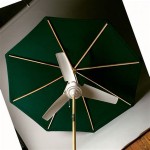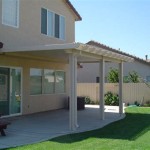Potted Palm Trees for Patio: Essential Considerations
Adorning your patio with lush palm trees can instantly transform it into a tropical oasis. However, selecting the right potted palm tree is crucial for the well-being of your plant and the aesthetics of your outdoor space. Here are some essential aspects to consider:
1. Climate Suitability
Palm trees are native to warm climates, so it is imperative to choose species that can thrive in your specific region. Research the USDA hardiness zone of your area to determine which palm trees are most suitable. Cold-hardy palms, such as pygmy dates and needle palms, can withstand temperatures as low as 10 degrees Fahrenheit, while tropical palms, like queen palms and foxtail palms, require warmer temperatures.
2. Size and Growth Rate
The size of the palm tree is a crucial consideration for your patio. Measure the available space and consider the potential height and spread of the mature tree. Slow-growing palms, such as windmill palms, may take years to reach their full size, while fast-growing palms, like traveler's palms, can quickly outgrow their containers.
3. Pot Selection
Choose a pot that is proportionate to the size of the palm tree. It should provide adequate space for root growth and drainage. Opt for pots made of durable materials, such as glazed ceramic or fiberglass, which can withstand outdoor elements. Ensure that the pot has drainage holes to prevent waterlogging, which can be detrimental to the palm's health.
4. Soil Requirements
Palm trees prefer well-draining soil that is rich in organic matter. Use a potting mix specifically designed for palms, which typically contains a blend of peat moss, perlite, and bark fines. Amend the soil with compost or manure to improve drainage and fertility.
5. Light Requirements
Most palm trees thrive in full sun to partial shade. Determine the amount of sunlight your patio receives and select species accordingly. Shade-tolerant palms, like coconut palms and majesty palms, can withstand indirect light, while sun-loving palms, such as Mexican fan palms and sabal palms, require ample sunlight.
6. Watering Needs
Water your palm tree regularly, especially during the hot summer months. Allow the soil to dry out slightly between waterings to prevent root rot. Adjust the frequency and amount of water based on the size of the tree, pot, and climate. Mulch around the base of the tree to conserve moisture and suppress weeds.
7. Fertilization
Fertilize your palm tree every few months with a balanced fertilizer specifically formulated for palms. Follow the instructions on the fertilizer label to avoid over-feeding. Regular fertilization will promote healthy growth and lush foliage.
8. Pruning and Maintenance
Regular pruning is essential for maintaining the health and appearance of your potted palm tree. Remove dead or discolored leaves to improve airflow and prevent disease. Trim any dead or overgrown fronds to keep the palm looking its best.
Conclusion
By carefully considering these essential aspects, you can select the perfect potted palm tree for your patio. With proper care and maintenance, your palm tree will thrive and become a beautiful addition to your outdoor oasis for years to come.

Potted Palm Trees For Your Patio Palms Tree S

4 Palm Tree Patio Container Mix Urban Palms

Beautiful Palm Trees And Cycads For Your Containers

How To Care For Palm Trees

How To Grow And Care For Potted Palm Trees Outdoors Plants Outdoor Landscaping

Potted Palm Trees For Your Patio Palms Plants

Palm Tree Planter What Kind Of Pot Should I Use For A Jay Scotts Collection

Potted Palms Tropical Backyard Pool Landscaping Landscape Design

How To Care For Palm Trees The Home Depot

Majesty Palm In 1 94 Gallon S Pot The House Plants Department At Com








